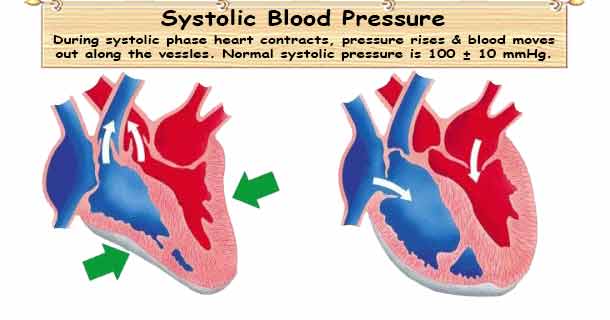Blood pressure is the pressure generated by the blood circulating against the walls of blood vessels. This circulating blood pressure is higher when the heart contracts (Systolic).
After age 50, Systolic blood pressure (SBP) is more important; before that, diastolic blood pressure (DBP) is more potent cardiovascular risk factor.
Systolic blood pressure may vary based on the activity; surrounding temperature, diet-taken, state-of-mind (emotional), physical posture, and medicines you are taking.
What is systolic blood pressure?
For every heartbeat, blood pressure varies between systolic and diastolic pressures. Systolic pressure is the peak pressure in the arteries, which generated at the end of the cardiac cycle when the ventricles are contracting.
Blood pressure readings measured in millimeters of mercury (mmHg) and are noted as two numbers, for example, 110 over 70 (i.e., 110/70). The top number (110 mmHg) is the systolic blood pressure reading. It represents the maximum pressure generated when the heart contracts (beats).
Importance of systolic blood pressure reading
Heart pump’s blood into the blood vessels, enough systolic BP requires pushing blood to all parts of your body. Systolic pressure generates a blood flow to all branches to provide oxygen and nutrients for every body cell.
Aging increases the importance of systolic blood pressure. It rises with age because of the hardening of the arteries; this is a natural process.
High and low systolic blood pressure
If the systolic number is low, your body cells are unable to get the required oxygen and nutrients. It may even lead to cell death. Less than 90 mmHg are considering as low called hypotension.
At age 50 to 59 systolic pressure is the most important predictor.
If the systolic number is high, your blood vessels are becoming harder (start losing elasticity) and develop scars. It may cause blood vessel blockage or rupture leads to organ damage or even failure. If the number is over 140 mmHg, it is considering as high called hypertension. If only the systolic blood pressure is more than 140 mmHg, but the diastolic maintains average at less than 80 mmHg known as isolated systolic hypertension.

